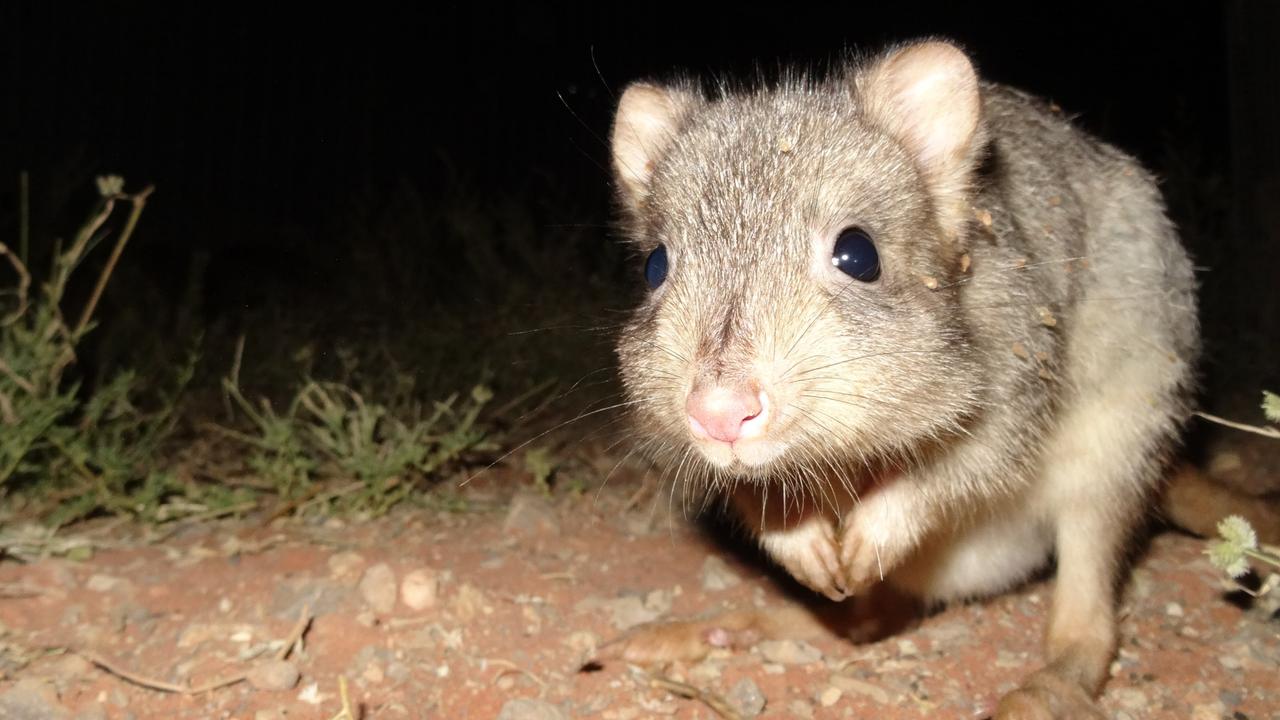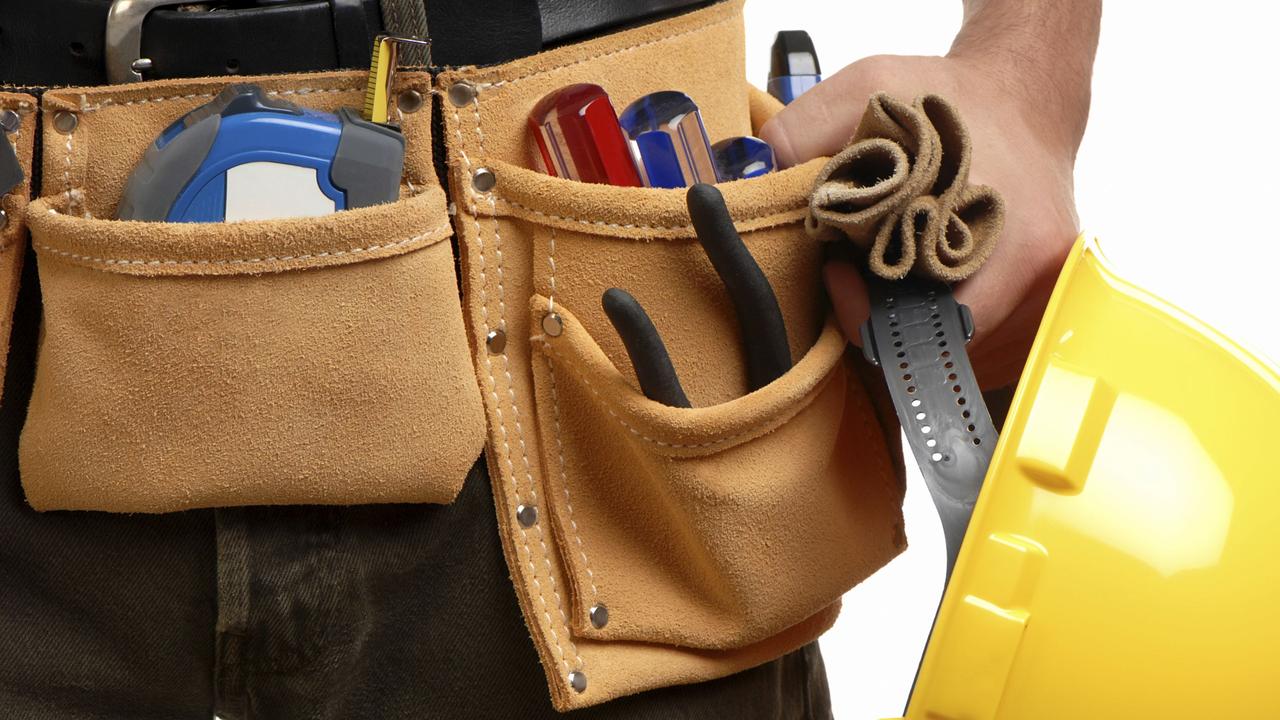The sad treatment of elephants in South Australia
THE first elephant in Adelaide eventually died at a pub. Luckily, SA treated other elephants better — but, for some, not much. Here’s a look at our occasionally ill-fated relationship with elephants in SA.

SA News
Don't miss out on the headlines from SA News. Followed categories will be added to My News.
- The old Adelaide pubs we’ve loved and lost
- Take a look inside the extraordinary Capri Theatre
- The amazing Adelaide uni pranks of old
- When Glenelg had its own Luna Park
THE very first elephant that came to Australia disembarked at Port Adelaide in 1852, having had a stint in Hobart and Melbourne the previous year.
This young elephant, known as Tommy, had also been known as Jumbo and Rajah. He was owned by three different publicans whose pubs were the Cremorne in Unley, the Smith Hotel in Smithfield and the Cross Keys at Gepps Cross.
Unfortunately, there was little knowledge at the time on how to feed and care for an elephant, for Tommy died from what was believed to be a chill aged eight in 1858, at the Gepps Cross Hotel.
In 6½ years in Australia, this elephant had three names, made three sea journeys, was put on display in three colonies, put up for sale several times, figured in three court cases, took part in foot races and parades and even had a walk-on part at Adelaide’s oldest theatre, then called the Royal Victoria Theatre, in Playhouse Lane.

When Sir Thomas Elder donated Miss Siam to the Adelaide Zoo, she was the main drawcard until her death in 1904. The local papers wrote on the day of her death that “she lay down like a cow and went off in five minutes”.
Her autopsy found a gallstone as big as a man’s head. But even in death the grieving public could still go and see her after Miss Siam was prepared for display by the museum’s taxidermist.
Mary Ann came to the zoo soon after Miss Siam and, like her, made enough in ride fares to pay for her keep.
A “tricky” elephant, she was known to have made several attacks on those she didn’t like. She died in 1934 due to the effects of a twisted bowel.


Lillian, who replaced her, is remembered by many older South Australians. Quiet, calm and the gentlest of the zoo’s elephants, she was the only one to be put down before her time due to poor health, when she was shot dead in 1956 by a member of the zoo board who had a memorable Kenyan safari track record.
Lillian was the only elephant whose remains were not retained as a skeleton or to be stuffed for display. Instead, she was dismembered for the Gepps Cross boiling-down works.
In her place came the feisty young Samorn, who was shipped from the Bangkok Zoo. At the Adelaide Zoo, Samorn had a run of keepers before the famous Hero Nuus, a Dutchman, took over as her keeper in 1964.
He cared for her for 25 years and through Samorn he became a celebrity, until he retired early and died in 1989.



As a lone elephant, Samorn’s life became the public who came to see her and the people who worked with her. A couple of years after her arrival she pulled a cart that took many children at once for rides around the zoo. This gave her essential exercise and time out from her enclosure.
The arrival of Tara in 1962 was wonderful for Samorn and all the visitors who came to see the two juvenile elephants at the zoo.
But it was not always wonderful for anyone who was working at the zoo. Overnight, the place became several decibels noisier as the two boisterous elephants communicated as only elephants do, by trumpeting, rumbling and bellowing.

Samorn, the once docile, quiet and passive beast, changed, for suddenly she had one of her kind to love and be with.
And it was as though Tara encouraged Samorn to come out of her shell and show her true character. This was still in the period when elephants gave rides and were expected to perform and put on a show.


This was a fairly easy thing to do when there was just one elephant being dominated by keepers who could also choose to have a close and personal relationship with her.
After all, they were all she had. This no longer applied once Tara entered the scene. Perhaps the zoo staff did not understand the dynamics of communication between animal and keeper and how this could change when introducing another elephant into the zoo community.
Samorn’s earliest years before Tara came to the zoo are remembered for her behaving more predictably. In hindsight, the surprise is that this period lasted as long as it did, for three of her first five keepers were fond of the bottle and did not always treat Samorn kindly.

Several times when they were under the influence of alcohol and lost control of her, they resorted to harsh treatment, which led to unwanted media publicity and some keepers being fired.
Trevor Klein (a zoo volunteer and book distributor for Wakefield Press) remembers the feisty Samorn when she was young being treated with some aggression by some keepers.
“I saw her being hit with the handle of a tool,” he recalled. “I have seen an ankus (elephant training hook) jabbed into her with its pointed end just above the hook that goes behind her ear, and I’ve seen that hook rammed down over the back of her ear.”
While Samorn did not seem to hold a grudge at the time, her earlier experiences of keepers smelling of alcohol, or their harsh treatment, saw her have occasional outbursts where she lashed out at visitors, children, keepers and other zoo employees when she was older.
Several who knew her said that in later life she was hostile to anyone who smelt of alcohol or those she simply didn’t like. It is likely the zoo management hadn’t thought it through as to how the dynamics would change when Tara arrived in 1962.

Samorn, now with her “own baby” to care for, was no longer solely dependent on her keepers.
For the few years that Tara was at Adelaide Zoo, Samorn was reminded that she was indeed an elephant and she wanted to behave like one with her new companion.
The elephants were the major drawcard at the zoo in this period because they gave cart rides and did circus tricks. Giving rides was a rich little earner of several thousand pounds per year that literally paid for their keep.
When William Lancaster was appointed director and the situation remained the same in the way the elephants were handled and trained to perform, Lancaster decided Tara was more a liability than an asset and so she had to go.
Sole Brothers Circus offered £1250 and the circus collected her on December 24, 1965. Sadly, selling Tara led to her untimely death through a traffic accident in 1985, when her circus was travelling between tent stops in Queensland.
Although Samorn showed no signs of distress when Tara left, her character had changed after having a close companion for almost four years. Although there were no outwards signs of grief, it is quite likely it could have been internalised, never to be forgotten. Or is it possible that she was secretly pleased to see her go?

Hero Nuus’s presence was the very one-to-one relationship she needed at the time that Tara was sold off. While another keeper may not have been single-minded in caring for Samorn, Nuus was. Samorn died in October 1994 at Monarto Open Range Zoo at the age of 44, when she slipped into the moat of her paddock. She lay trapped upside down for about two hours before she was discovered. By the time a crane lifted her gently from the moat and she was righted with her legs tucked beneath her she had grown calm.
But it was all too much for Samorn, exhausted from the ordeal of struggling to free herself. She died shortly after, not having had the energy to stand up.

Eighteen months after Samorn’s death, the University of Adelaide showed an interest in her carcass and she was exhumed so she could be retained for exhibition. Researchers spent six months assembling her vast skeleton for comparative anatomy and discovered she had suffered severe “honeycomb” deterioration in one toe bone, indicating she had endured a very sore foot. On her death, newspapers stated she had been suffering from long-term osteoarthritis in 80 per cent of her joints.

Now you can see her skeleton in the foyer of the Anatomical and Medical Sciences Resource Centre in Frome Rd, where she is positioned looking impressive alongside the larger Mary Ann, the zoo’s second elephant.
Despite Samorn’s size and strength she was an adored celebrity in her own right for many years as the “state’s pet”, rather than a wild animal or domestic pet.
Patricia Sumerling’s new book, Elephants and Egotists, is available from bookshops and Wakefield Press, 8352 4455, rrp $24.95


